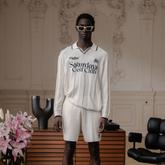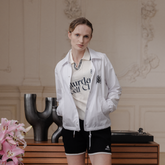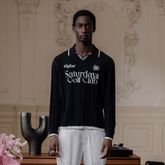The History of Golf Fashion: From Individuality and Diversity to Uniformity
Golf originated in 15th-century Scotland, but it wasn't until the early 20th century that golf fashion began to carry significant cultural meaning. From the 1920s to the 1960s, golf was a stage for showcasing elegance and individuality. Golf fashion at that time was a form of art, reflecting the aesthetics and trends of the era.
However, starting in the 1990s, the growing focus on functionality caused golf fashion to lose its diversity and gradually follow a more uniform path. This article delves into the fascinating evolution of golf fashion, with a particular focus on that pivotal turning point.
1920s: A Lifestyle Symbol of the Upper Class
Golf fashion in the 1920s was closely tied to upper-class culture, serving as a reflection of social status and refined taste. Key items of this era included tweed jackets, knickerbocker pants, checked vests, and paperboy caps. Men wore knee-length pants paired with boldly patterned socks, while women opted for elegant silhouettes featuring skirts and knit cardigans.
Golf attire at this time was not just sportswear but a symbol of a luxurious and sophisticated lifestyle, blending functionality with high fashion.
1950s: Fusion with Preppy Style, Emphasizing Individuality and Elegance
As the 1950s dawned, golf fashion evolved into a more modern and polished style, reflecting the broader cultural shift toward casual sophistication. The rise of the preppy look, inspired by Ivy League fashion, had a significant impact on golf attire. Cotton shirts, knit vests, and lighter slacks became wardrobe staples for men, while women embraced cinched-waist skirts and polo shirts for a sporty yet chic look.
This era marked a pivotal turning point for golf fashion, as it successfully merged the lifestyle-oriented preppy aesthetic with the sport’s traditional elegance. Individual expression and personal style remained central, offering golfers the opportunity to showcase their unique fashion sense both on and off the course. The 1950s thus stand out as a decade where golf fashion celebrated a balance of modernity, individuality, and timeless charm.
1960s–1980s: An Explosion of Color and Individuality
The 1960s marked a turning point in golf fashion, reflecting the social changes of the era. Bold colors and unique patterns began to emerge on the golf course, with bright pinks, yellows, and mint greens becoming popular for polo shirts, paired with colorful pants. Unlike the restrained and classic styles of previous decades, the 1960s celebrated self-expression through fashion.
In the 1970s, the influence of the disco era brought even more flamboyant and vibrant styles to golf fashion. Large-collared shirts, flared pants, and vividly patterned knitwear dominated the scene, transforming the golf course into a lively space for bold personal expression. Patterns and striking color combinations became essential elements for both professional players and amateur golfers.
By the 1980s, sports brands began to take control of golf fashion trends. Companies like IZOD and Lacoste led the market, introducing a new focus on functionality and practicality. Golf was no longer an exclusive pastime for the upper class but had become a mainstream and widely accessible sport. The shift in the sport's audience drove fashion toward simpler, more casual, and practical styles.
Although colorful and distinctive designs were still present, growing attention to performance and functionality hinted at a transition. This change laid the groundwork for the more uniform and performance-focused golf fashion of the 1990s.
Post-1990s: The Era of Functionality and the Decline of Individuality
The 1990s marked a pivotal turning point in golf fashion. As global sports giants like Nike and Adidas entered the golfwear market, the direction of golf fashion changed rapidly. The most significant transformation brought by the rise of major brands was the introduction of high-performance functional materials.
Innovations such as Dri-Fit fabrics that quickly absorbed and dried sweat, as well as waterproof and wind-resistant apparel, became the new standard. Functionality took center stage, and as performance became the priority, designs grew increasingly minimalist. The color palette narrowed to basic shades like white, black, and gray, with an emphasis on logo-driven branding rather than distinctive patterns or personal style.
As performance and comfort dominated every aspect of design, the once vibrant and diverse world of golf fashion began to lose its individuality. Unique and expressive styles were slowly pushed aside, giving way to a more uniform, performance-focused aesthetic that has defined golf fashion ever since.
The Path Forward for Khalhon'
Modern golf fashion has made remarkable progress in terms of functionality and practicality. However, it’s hard not to feel a sense of nostalgia for the era between the 1920s and 1960s, when diversity and individuality were at the forefront of golf style. During those years, golf fashion was more than just sportswear—it was a form of art, reflecting cultural identity and personal expression.
For too long, major sports brands have dictated the market’s direction, creating a uniform and standardized style. But now, it’s time to break free from the mainstream mold and reclaim individuality and personal style. Khalhon' knows this path won’t be easy. But "Authenticity is Everything", and it may be the only thing we truly have.
Khalhon' invites you on a journey to rediscover your own identity and unique style. Rather than following fleeting trends, we encourage you to "Be yourself"—to embrace who you are and express it freely, both on and off the course.
Individuality matters. True style starts with you. Khalhon' is here to walk with you on that authentic journey.






